-
Products
- Lab Instruments
-
Lab Meters and Probes
Calibration Standards Other Meters and Probes
- Chemistries, Reagents, and Standards
-
Online Analyzers
Ammonium Analysers Chlorine Analyzers
- CL17sc
- CL10sc Amperometric
- 9184 sc Amperometric
- Ultra Low Range CL17sc Colorimetric Chlorine Analyser
EZ Series Analysers- Iron
- Aluminium
- Manganese
- Phosphate
- Chloride
- Cyanide
- Fluoride
- Sulphate
- Sulphide
- Arsenic
- Chromium
- Copper
- Nickel
- Zinc
- Ammonium
- Total Nitrogen
- Total Phosphorus
- Phenol
- Volatile Fatty Acids
- Alkalinity
- ATP
- Hardness
- Toxicity
- Sample Preconditioning
- Boron
- Colour
- Nitrate
- Nitrite
- Silica
- Hydrogen Peroxide
- EZ Series Reagents
- EZ Series Accessories
- EZ sc Series Inorganics
- EZ sc Series Metals
- EZ sc Series Nutrients
-
Online Sensors and Controllers
Digital Controllers (Transmitters) Controllers (Analog)
- SC4500
- Orbisphere 410/510 Carbon Dioxide
- Orbisphere 410/510 Oxygen
- Orbisphere 410/510 Ozone
- Pro Series
pH & ORP Sensors- 1200-S pH
- 12mm pH/ORP
- 8362 sc High Purity
- Combination pH/ORP
- Differential pH
- Digital Differential ORP
- Digital Differential pH
- LCP ORP
- LCP pH
Dissolved Oxygen Sensors- 2582sc
- 5500 Clark DO
- 9582 sc
- LDO 2 sc
- Orbisphere 311xx
- Orbisphere GA2x00
- Orbisphere K1X00
- Orbisphere M1100
- Orbisphere Oxygen ppb
Conductivity Sensors- 3400 Analogue Contacting
- 3400 Digital Contacting
- 3700 Analogue Inductive
- 3700 Digital Inductive
- 3798 sc Electrodeless
- 9523 Cation Conductivity
- 9525 DCCP System
- Samplers
- Multiparameter Online Panels
- Test Kits & Strips
-
Microbiology
Accessories and Chemicals Dehydrated MediaInstruments KitsLabware
- Automated Lab Systems
-
Lab Equipment and Supply
Apparatus
- Brushes
- Clamps, Rings & Stands
- Crucibles
- Crucibles & Casseroles
- Dispensers & Droppers
- Grab Samplers
- Oil and Grease
- Other Apparatus
- Pipet Aids
- Pipettes
- Racks
- Stir Bars
- Tubing
- Weighing Accessories
General Lab Consumables Glassware/PlasticwareInstruments- Balances
- Hot Plates & Stirrers
- Microscopes
- Moisture Analysers
- Other Instruments
- Ovens & Incubators
- Thermometers
- Timers
- Vacuum Pump
- Industrial UV
- Flow and Collections
- Electrochemistry
- Parameters
- Industries
- Support
- Service
- e-Shop
Hach India
Choose your country or region:
Europe
Americas
Asia - Australasia
- Australia
- Mainland China
- India
- Indonesia
- Japan
- Malaysia
- New Zealand
- Philippines
- Singapore
- South Korea
- Thailand (Thai)
- Taiwan
- Vietnam
Middle East - Africa
Promotions INQUIRY: +91 9916040249
Groundwater Monitoring
What is groundwater?
Groundwater contained in aquifers is one of the most abundant water sources for drinking water facilities. Unlike surface water, groundwater is filtered through rock, soil, and sand, which helps remove organic material and disease-causing organisms. However, it is still essential to treat groundwater for added health protection.
In 2006, the EPA implemented the Ground Water Rule (GWR), which requires small systems to disinfect their groundwater source water to provide additional protection against microbial pathogens. Generally, groundwater is low on organic matter, which makes disinfection byproducts formation less of a concern.

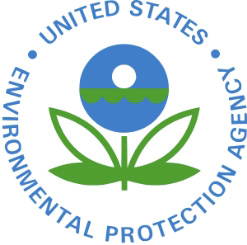
What is the Ground Water Rule (GWR)?
The EPA issued the Ground Water Rule to improve your drinking water quality and provide additional protection from disease-causing microorganisms. Water systems that have ground water sources may be susceptible to fecal contamination. In many cases, fecal contamination can contain disease-causing pathogens. The Ground Water Rule provides increased protection against these microbial pathogens, most common under GWUDI conditions where surface water recharges aquifer.
The Ground Water Rule applies to public water systems that treat ground water. The rule also applies to any system that mixes surface and ground water if the ground water is added directly to the distribution system and is provided to consumers without treatment.
The size and technology affect how compliance monitoring requirements impact your utility so reference the EPA here for exact details.
Click here for more information on the Ground Water Rule.
Why test groundwater?
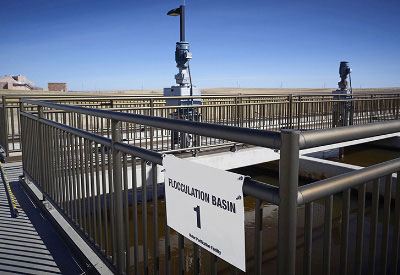 Groundwater is typically low on natural organic matter (NOM); however, it may still require treatment with coagulants to remove colloidal particles present after natural filtration through the layers of soil. In some situations, groundwater does not require additional filtration. However, besides the potential for bacterial contamination, groundwater, especially under the direct influence of surface waters (GWUDI), may contain compounds that, while not harmful for human consumption, can provide treatment challenges to some systems, (especially those using chlorine for the first time), e.g. Nitrate, Iron and Manganese.
Groundwater is typically low on natural organic matter (NOM); however, it may still require treatment with coagulants to remove colloidal particles present after natural filtration through the layers of soil. In some situations, groundwater does not require additional filtration. However, besides the potential for bacterial contamination, groundwater, especially under the direct influence of surface waters (GWUDI), may contain compounds that, while not harmful for human consumption, can provide treatment challenges to some systems, (especially those using chlorine for the first time), e.g. Nitrate, Iron and Manganese.
With analytical testing, you can:
- Optimize coagulation/flocculation treatment
- Establish a chlorine disinfection strategy
- Achieve accurate chlorine measurements given known interferences
- Comply with the EPA Ground Water Rule
Which Options are Right for You?
 Your facility is required to monitor your groundwater for the presence of harmful contaminants and to disinfect. Monitoring your source water can help your facility optimize the treatment process and efficiently respond to uncertainties, helping contribute to lower operating costs and higher quality drinking water. Whatever your needs, Hach is ready to help with information, technology, and support.
Your facility is required to monitor your groundwater for the presence of harmful contaminants and to disinfect. Monitoring your source water can help your facility optimize the treatment process and efficiently respond to uncertainties, helping contribute to lower operating costs and higher quality drinking water. Whatever your needs, Hach is ready to help with information, technology, and support.
Explore the various parameters and methods for source water monitoring below.
Ammonia
Ammonia levels can reach several mg/L in groundwater systems, especially those located in agricultural areas. The ammonia levels can change seasonally and need to be monitored. The ammonia will react with chlorine to form chloramines, creating an uncontrolled chloraminated water. The uncontrolled chloramination can cause taste and odor issues and possible nitrification problems in the distribution system. The standard salicylate method can be used to determine ammonia levels in the unchlorinated water.
Find the right testing solution
Free Chlorine
Ammonia in groundwater can be destroyed by taking the water through breakpoint chlorination. Free chlorine is added to the water to convert all the ammonia into chloramines. The further addition of free chlorine converts or "breaks" the chloramines down into nitrogen gas and other volatile species leaving only free chlorine as the residual disinfectant. The standard DPD Free Chlorine method can be used to determine when the desired free chlorine residual is reached. Free chlorine also causes iron and manganese to form insoluble precipitates, which can be removed by filtration but may interfere with DPD chemistry. Use the Indophenol No-interference Method 10241 to measure free chlorine residual when iron or manganese is present.
Find the right testing solution
Total Chlorine
Test for total chlorine to determine total disinfectant residual levels. The total chlorine concentration is required by most regulatory agencies for compliance reporting purposes. Use the total chlorine concentration for calculating the CT credits and optimizing the treatment process. Select the DPD Total Chlorine method that adequately covers the expected chlorine concentration range and gives the test sensitivity and concentration resolution desired. The method required may change depending upon the sampling point within the treatment system. The titration methods are easily adapted to meet the test ranges required in treatment process.
Find the right testing solution
Iron
Iron is present in most ground waters and is considered a secondary contaminant with maximum contaminant level (MCL) = 0.3 mg/L. The level of naturally occurring iron in a groundwater remains nearly constant and is usually present as ferrous iron (soluble form). When the ferrous iron reaches the surface it is oxidized by air to the ferric form giving the characteristic red water color and precipitating to give the red rust-colored stains on equipment and plumbing fixtures. Iron can also occur as the result of corrosion of well pipes or as the result of iron-reducing bacteria. Any sudden change in the iron concentration may indicate pipe or equipment corrosion, the presence of iron reducing bacteria or changes to the aquifer itself from seismic events, well infiltration or new drilling or fracturing activities in close proximity of the groundwater source. Use FerroVer Iron method for the routine checking for the presence of iron. The TPTZ method may be used for low level iron testing.
Find the right testing solution
Manganese
Manganese is present in most ground waters especially when iron is present, and is considered a secondary contaminant with maximum contaminant level (MCL) = 0.05 mg/L. At concentration levels above the MCL, it causes black stains on plumbing fixtures, laundry and other items in contact with the water. Use the extremely sensitive PAN method to determine manganese levels.
Find the right testing solution
pH
The pH of groundwater varies widely throughout the various regions of the world. Monitor the pH of the groundwater to determine the pH adjustments that are required to give the optimum pH range for chlorine disinfection. While the pH of groundwater remains essentially constant, monitoring of the pH is also a surrogate method to quickly detect any intentional or unintentional events that have occurred to the groundwater source, especially if it is under influence of surface water (GWUDI).
Find the right testing solution
Sulfide/Hydrogen Sulfide
Toxic hydrogen sulfide is produced by the anaerobic decomposition of organic material and sulfate reducing bacteria. It is characterized by a very noticeable rotten-egg odor. It is mainly found in groundwater supplies. It contributes to the chlorine demand of a raw water source and is easily removed by aeration or by the addition of chlorine.
Find the right testing solution
Chlorine Demand
Chlorine demand is a measure of the amount of chlorine consumed by a source water after a fixed time at a fixed pH and temperature. Organic materials, ferrous iron, reduced manganese, sulfide and ammonia are examples of species that consume chlorine during the disinfection process. A high chlorine demand suggests that disinfection by-products may form if the demand is due to organics, such as natural organic matter (NOM). Chloramines may be formed when ammonia is present and sulfides produced by sulfate reducing bacteria will add to the chlorine demand. The chlorine demand test can be modified to use the specific conditions of your source water or to investigate the demand from alternative groundwater sources.
Find the right testing solution
Nitrate (NO 3)
Nitrate is a regulated contaminant with 10 mg/L maximum contaminant level (MCL) often found in agricultural areas due to the use of fertilizers. Monitor your sources for nitrate because treatment is difficult and may require RO filtration.
Find the right testing solution
Nitrite (NO 2)
Monitor your sources for nitrite as it may be present in the source and gets oxidized during treatment to produce nitrate.
Find the right testing solution
Coagulation/Flocculation
Mainly, groundwater facilities aim to remove dissolved metals and/or TOC with pre-oxidation, ion-exchange, or membrane treatment. However, some utilities may employ chemical treatment with coagulants. If your water source requires additional treatment with coagulants to remove colloidal particles, you can use advanced monitoring and optimization tools available from Hach.
Find the right testing solution
Hach's Measurement Solution for the EPA Ground Water Rule
Learn about Hach's solution for monitoring chlorine online to satisfy the EPA Ground Water Rule.
Additional Resources

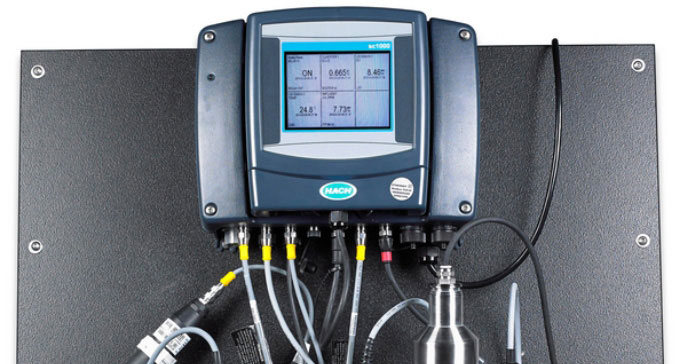
The benefits of an integrated panel for source water monitoring
Monitoring source water not only gives an early indication of potential problems, but also provides information to optimize treatment plant performance. Learn how an integrated panel will improve your monitoring process.
LEARN MORE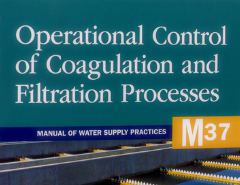
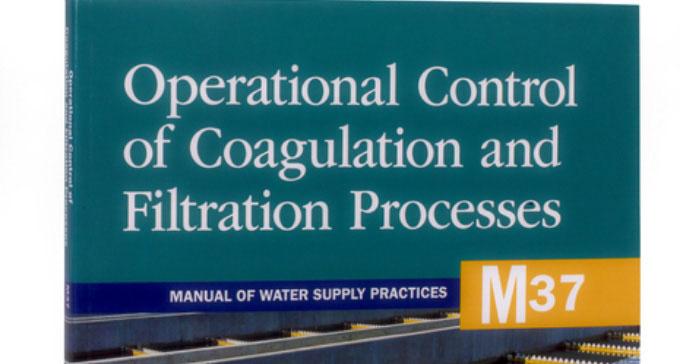
Purchase the AWWA Manual on Coagulation and Filtration Processes
This AWWA Manual of Water Supply Practices is designed to help you keep your treatment plant’s coagulation and filtration processes operating at optimum efficiency.
LEARN MORE

Purchase the Water Treatment Operator's Training Handbook
AWWA's most popular training handbook for water treatment operators, this handy guide provides a complete introduction to water treatment operations and equipment. It's an excellent resource when studying for your certification exam.
LEARN MORE
Select the attributes below to find the right ground water product for you.
Compare our different products used for various applications by exploring the resources and options below.



